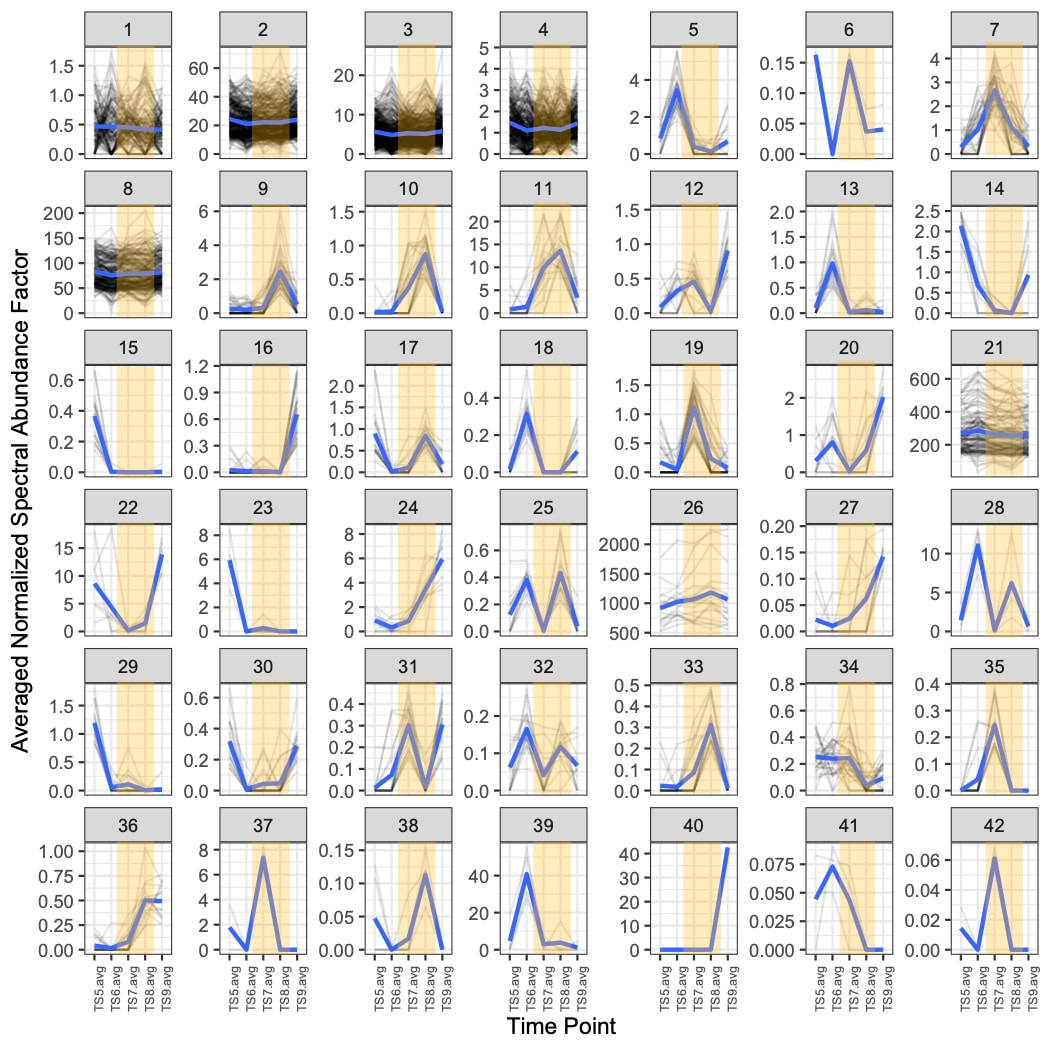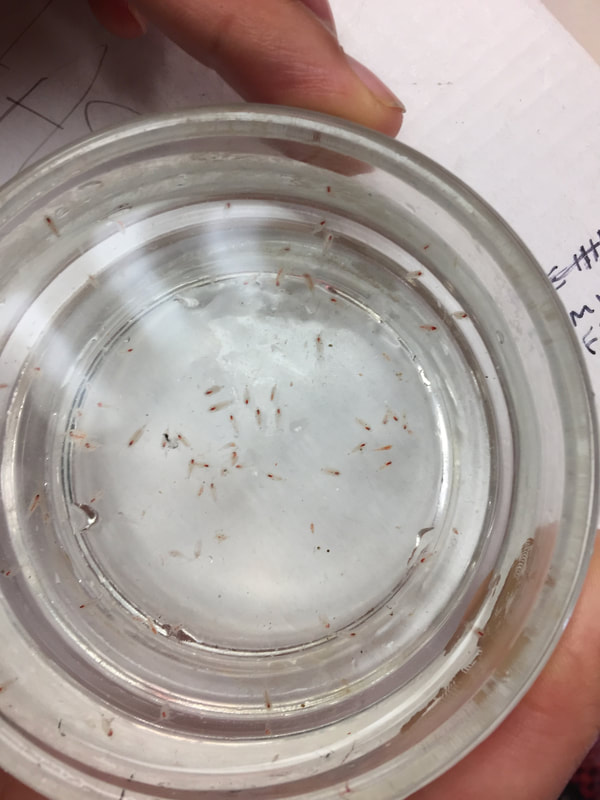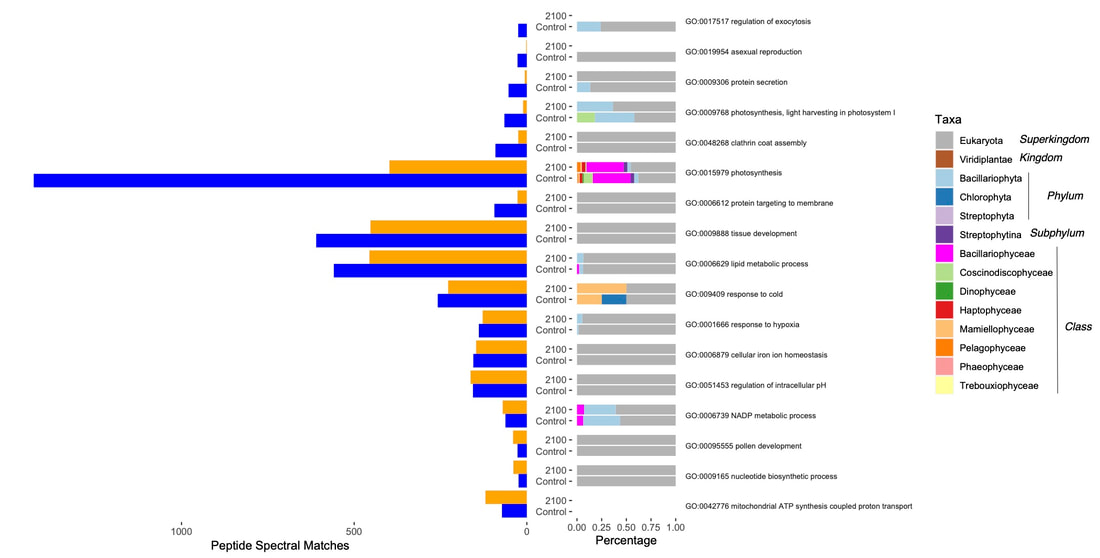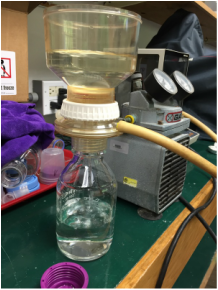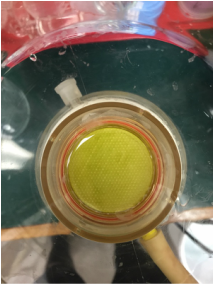|
Physiology of Copepod Diel Vertical Migration
Collaborators: Amy Maas, Leo Blanco-Bercial, Ann Tarrant Primary production in the ocean mostly occurs in the surface layer, but organisms in the deeper, darker ocean need access to these surface nutrients as well. Vertically migrating zooplankton are an important part of the carbon cycle between the surface and deep ocean. Some species, such as the subtropical Pleuromamma xiphias (right), migrate hundreds of meters daily, feeding in the productive surface layers at night and sinking to the depths during the day. Their metabolic activity at depth determines how much carbon and other nutrients reach the deeper food webs. We applied proteomics techniques to uncover the contribution of the copepod P. xiphias to the ocean carbon cycle. Cluster of protein abundances over day-night cycles in the copepod P. xiphias reveal cohorts of proteins that are up- and down-regulated on a circadian cycle.
|
P. xiphias separated from other plankton species.
|
Proteomics of coral bleaching
Collaborator: Jacqueline Padilla-Gamino
Bleaching events, during which corals a stressful environment causes corals to expel/lose their essential symbiotic algae, are becoming more frequent and widespread worldwide. Our collaborators followed corals that had been bleached over 9 months as some recovered, some died, and some were able to successfully produce gametes. Our in-depth physiological analyses, including proteomics, will allow us to understand which phenotypes are necessary for corals to survive bleaching events.
Collaborator: Jacqueline Padilla-Gamino
Bleaching events, during which corals a stressful environment causes corals to expel/lose their essential symbiotic algae, are becoming more frequent and widespread worldwide. Our collaborators followed corals that had been bleached over 9 months as some recovered, some died, and some were able to successfully produce gametes. Our in-depth physiological analyses, including proteomics, will allow us to understand which phenotypes are necessary for corals to survive bleaching events.
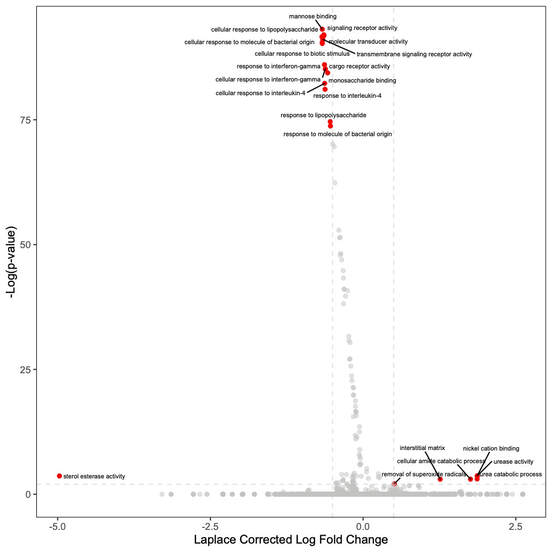
Each point on this plot represents a Gene Ontology (GO) term. Terms that are significantly overrepresented in corals that survive (or die) post-bleaching are in red. GO terms on the lefthand side of the plot are more prevalent in bleaching survivors, while those on the right are more represented in corals that die post-bleaching.
Community response to climate change
Collaborators: Philip Boyd
Climate change does and will continue to affect species assemblages and ecosystems, but many studies to date have limited investigations to a single species in isolation from its community. These single-species studies may overlook important community-scale interactions that may mitigate or enhance climate change impacts. Natural communities in the Southern Ocean were exposed to future ocean conditions in mesocosms to assess how climate change will impact the entire prokaryotic-eukaryotic plankton community. We used metaproteomics to characterize the physiological impacts of climate change on these planktonic communities.
Collaborators: Philip Boyd
Climate change does and will continue to affect species assemblages and ecosystems, but many studies to date have limited investigations to a single species in isolation from its community. These single-species studies may overlook important community-scale interactions that may mitigate or enhance climate change impacts. Natural communities in the Southern Ocean were exposed to future ocean conditions in mesocosms to assess how climate change will impact the entire prokaryotic-eukaryotic plankton community. We used metaproteomics to characterize the physiological impacts of climate change on these planktonic communities.
Gene Ontology (GO) categories that are significantly different between phytoplankton communities incubated in control mesocosms or mesocosms that mimick projected year 2100 conditions in the Southern Ocean. Blue and orange bars represent total peptide abundance for each GO term; stacked bars represent taxonomic contribution to each GO term.
|
Influence of the hatchery microbiome on oyster larvae
Collaborator: Steven Roberts One of the major bottlenecks in bivalve aquaculture is the unpredictable mass mortality events that occur during larval production. These mortality events occur after considerable resources have been used to raise a cohort of larvae. The causes of these events are rarely known and thus cannot be avoided in the future. We hypothesized that the intimate relationship between oyster larvae and their ambient microbiome may influence the success or failure of larval cohorts. We followed multiple cohorts of larvae at two different temperatures over the time period that usually includes the mass mortality events. We concurrently sampled the larvae and their rearing tank microbiome. We will explore the proteomic responses of both the larvae and their microbiome to find biomarkers of larval outcomes. |
Proteomics of salmon reproductive response to androgens
Collaborators: Graham Young, Kristy Forsgren, Jose Guzman, Chris Monson
Ovarian development is an essential process in reproduction regulated by the interplay of hormones in the endocrine system. Understanding what regulates egg quality and how to ensure high quality eggs are important aspects of conservation and aquaculture. We will deploy proteomics, along with other complementary physiological measures, to more fully characterize the pathway of ovarian follicular development in coho salmon, with a specific focus on the role of androgens.
Collaborators: Graham Young, Kristy Forsgren, Jose Guzman, Chris Monson
Ovarian development is an essential process in reproduction regulated by the interplay of hormones in the endocrine system. Understanding what regulates egg quality and how to ensure high quality eggs are important aspects of conservation and aquaculture. We will deploy proteomics, along with other complementary physiological measures, to more fully characterize the pathway of ovarian follicular development in coho salmon, with a specific focus on the role of androgens.
